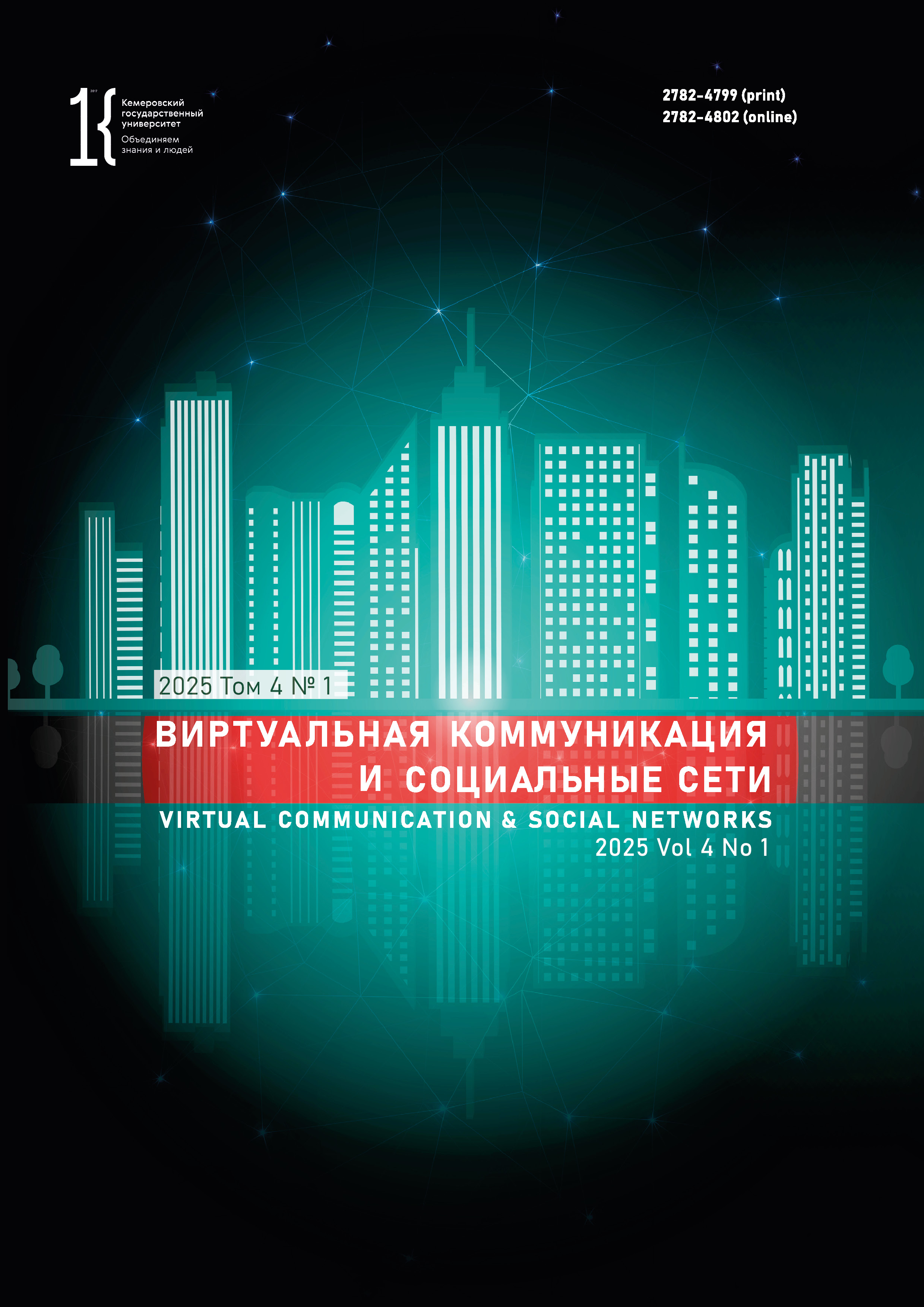employee from 01.01.2011 until now
Arkhangelsk, Russian Federation
Official mass media are not the only source of city image development: social media do the same by engaging users in discussion and exchange of opinions. The image of the city in social media is a relatively new research object with a number of unresolved issues. This article defines the phenomenon of city image in social media and describes its linguistic features. The research involved a new automatic data collection tool: a web application that trawled social networks, messengers, official websites, and portals for reactions to the trigger word Arkhangelsk and its derivatives. The semantic, contextual, and genre analyses covered a manually selected data set (n = 2,237) for April-November 2023. The image of Arkhangelsk demonstrated a certain heterogeneity with a combination of official and unofficial images that differed in evaluation. However, the components could be structured as a content field with a reliable positive core (history, culture, nature), a relatively stable middle part (economy, finance), and a rapidly changing periphery (infrastructure, society). The social media texts belonged to a wide genre range. The analysis scheme can be applied to other territorial entities.
city image, social media, image components, official image, unofficial image, evaluation, genre
1. Bazhenova E. A., Shirinkina M. A. Communicative techniques for managing the digital reputation of executive authorities. Virtual Communication and Social Networks, 2024, 3(3): 255–263. (In Russ.)] https://doi.org/10.21603/2782-4799-2024-3-3-255-263
2. Berezkina E. Yu. Using social networks to shape the image of the CEC of Russia in 2019. Pravo i politika, 2022, (5): 28–40. (In Russ.)] https://elibrary.ru/ohkpiz
3. Vazhenina I. S. Image, reputation and brand of the territory. Ekaterinburg: UIEC, 2013, 408. (In Russ.)] https://elibrary.ru/vlnncj
4. Zaitseva L. A., Meshcheriakova D. A. The image of the territory: The main approaches to the study. Natsionalnaia assotsiatsiia uchenykh, 2019, (18-2): 13–18. (In Russ.)] https://elibrary.ru/lsrgrf
5. Kaziaba V. V., Shchipitsina L. Yu. Urban – media – verbal: A theoretical model of the verbal city image in social media. Research result. Theoretical and Applied Linguistics, 2023, 9(4): 4–30. (In Russ.)] https://doi.org/10.18413/2313-8912-2023-9-4-0-1
6. Kuzovlev S. S., Rykunova E. S., Sluka N. A. To the topic of studying the image of the world’s largest tourist urban destinations in the Russian-speaking segment of the Internet. InterKarto. InterGIS, 2022, 28(2): 347–361. (In Russ.)] https://doi.org/10.35595/2414-9179-2022-2-28-347-361
7. Melnik N. V., Gerasimchuk D. M. Strategies of forming the image of the region (content analysis of the official page of S. E. Tsivilev in the social network "VKontakte"). Filologiya i chelovek, 2020, (3): 45–59. (In Russ.)] https://doi.org/10.14258/filichel(2020)3-04
8. Mrug K. V. On the formation of the city’s image in social media. Corporate strategic communications: Trends in professional activity: Proc. Intern. Sci.-Prac. Conf., Minsk, 5–6 Oct 2023. Minsk: BSU, 2023, 161–163. (In Russ.)] https://elibrary.ru/aquxgd
9. Pakshina I. A., Rus’kina E. S. Cities of Mordovia: Identity in media discourse. Vestnik Permskogo universiteta. Filosofia. Psihologia. Sociologia, 2020, (2): 328–343. (In Russ.)] https://doi.org/10.17072/2078-7898/2020-2-328-343
10. Panasyuk A. Yu. Formation of image: Strategy, psychotechnologies, and psychotechniques. 3rd ed. Moscow: Omega-L, 2009, 265. (In Russ.)]
11. Poselenova E. Yu., Shapolova D. D. Editing digests for social networks. Virtual Communication and Social Networks, 2024, 3(2): 102–110. (In Russ.)] https://doi.org/10.21603/2782-4799-2024-3-2-102-110
12. Svergun A. A. Use of social media in forming the image of the governor of Sevastopol. Nauchnyi Lider, 2024, (37): 67–71. (In Russ.)] https://elibrary.ru/avfwdl
13. Solovyeva Yu. O. Genre and stylistic features of law-related posts. Lomonosov Linguistics and Intercultural Communication Journal, 2021, (3): 133–142. (In Russ.)] https://elibrary.ru/wbxddh
14. Sushnenkova I. A. Cognitive-linguistic modeling as a perspective method of research of regional image (by example of image of Omsk Region). Vestnik Omskogo universiteta, 2011, (4): 233–237. (In Russ.)] https://elibrary.ru/pfztxh
15. Chepkasov A. V. Modelling of the image of the Kuznetsk basin according to the media. Mir russkogo slova, 2018, (2): 36–40. (In Russ.)] https://doi.org/10.24411/1811-1629-2018-12036
16. Shevchenko V. S. The elements of communicative strategy in region’s image development. Neofilologiya, 2024, 10(1): 212–221. (In Russ.)] https://elibrary.ru/ghllzr
17. Shumskaya M. V. Image of Krasnoyarsk in social media: content formats (on the example of "VKontakte"). Relevant issues of aviation and cosmonautics: Proc. IX Intern. Sci.-Prac. Conf., Krasnoyarsk, 10–14 Apr 2023. Krasnoyarsk: SibSU, 2023, vol. 3, 1141–1143. (In Russ.)] https://elibrary.ru/zoarpu
18. Buhmann A. Measuring country image. Theory, method, and effects. Wiesbaden: Springer VS, 2016, 147. https://doi.org/10.1007/978-3-658-15407-3
19. Echtner C. M., Ritchie B. J. R. The meaning and measurement of destination image. The Journal of Tourism Studies, 2003, 14(1): 37–48.
20. Gillin P. The new influencers: A marketer’s guide to the new social media. Fresno: Quill Driver Books, 2007, 236.
21. González-Rodríguez R. M., Martínez-Torres R., Toral S. Post-visit and pre-visit tourist destination image through eWOM sentiment analysis and perceived helpfulness. International Journal of Contemporary Hospitality Management, 2016, 28(11): 2609–2627. https://doi.org/10.1108/IJCHM-02-2015-0057
22. Indaco A. From twitter to GDP: Estimating economic activity from social media. Regional Science and Urban Economics, 2020, 85. https://doi.org/10.1016/j.regsciurbeco.2020.103591
23. Liu N., Sun X., Hong Sh., Zhang B. Reproduction, cultural symbolism, and online relationship: Constructing city spatial imagery on TikTok. Frontiers in Psychology, 2022, 13. URL: https://www.researchgate.net/publication/366597712_Reproduction_cultural_symbolism_and_online_relationship_Constructing_city_spatial_imagery_on_TikTok (accessed 10 Nov 2024). https://elibrary.ru/wldvto
24. Safko L., Brake D. K. The social media bible. New Jersey: Wiley, 2009, 608.
25. Sun Q., Paswan A. Country branding through Olympic Games. Journal of Brand Management, 2012, 19: 641–654. https://doi.org/10.1057/bm.2011.63
26. Tardy Ch. M. How epidemiologists exploit the emerging genres of Twitter for public engagement. English for Specific Purposes, 2023, 70: 4–16. https://doi.org/10.1016/j.esp.2022.10.005















